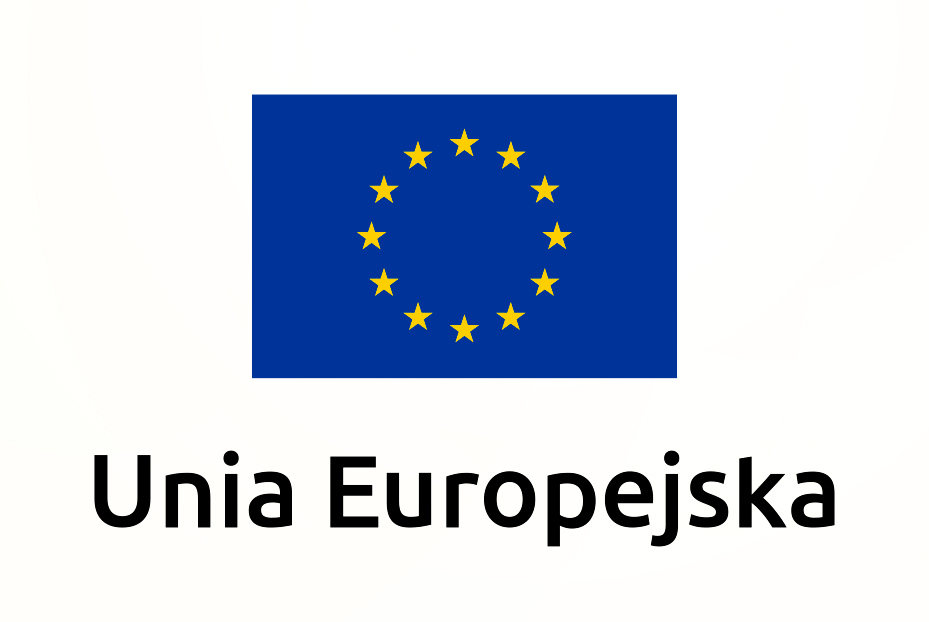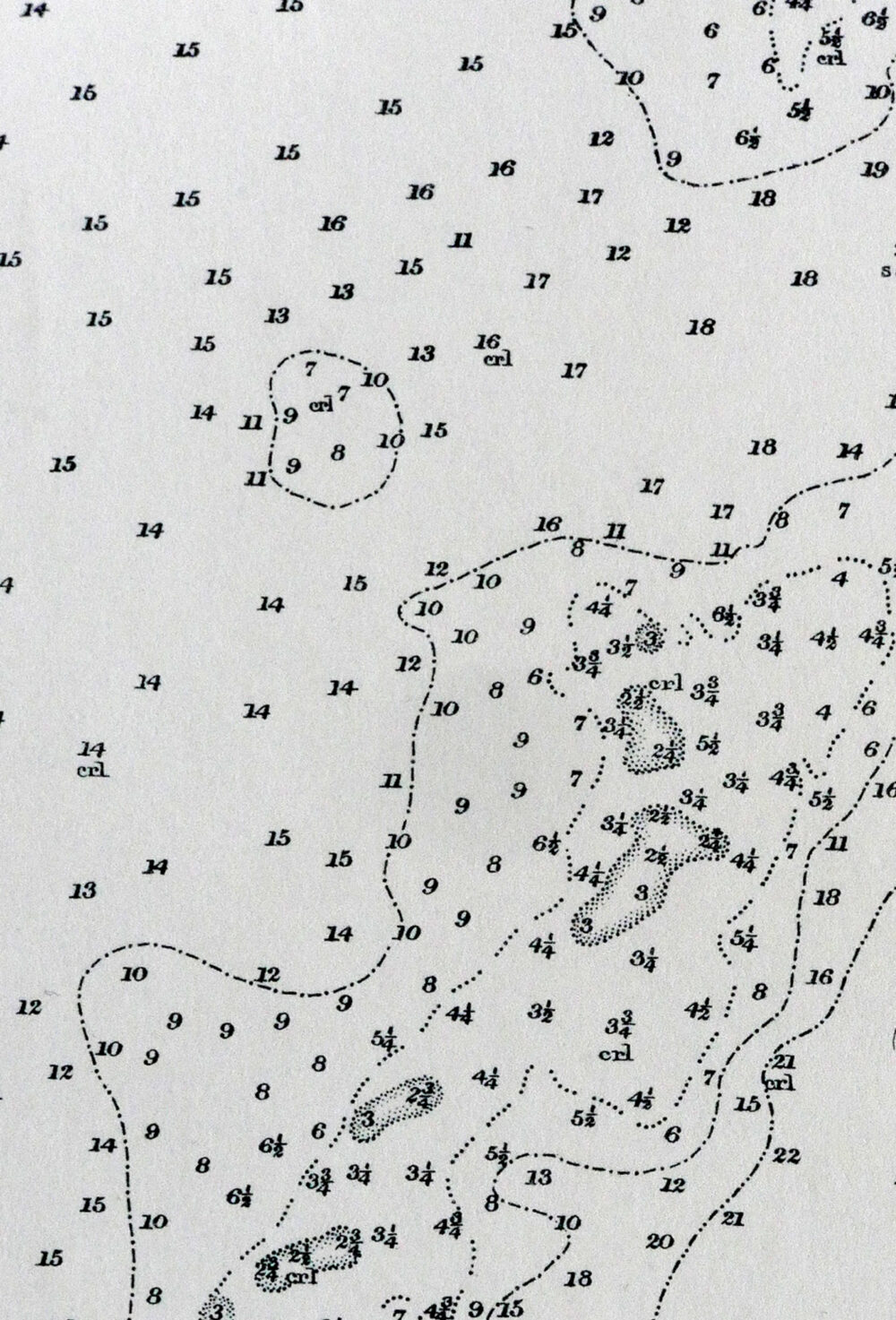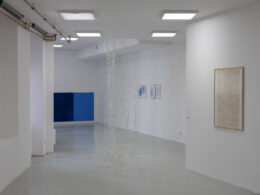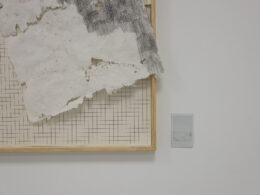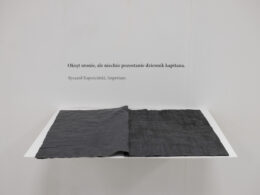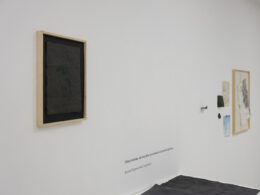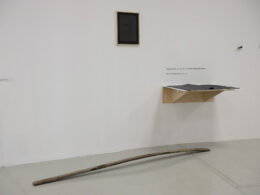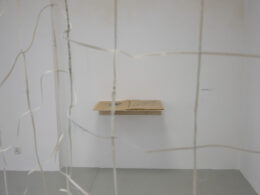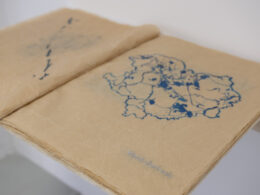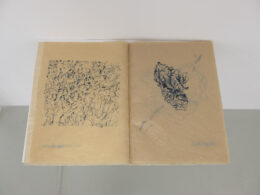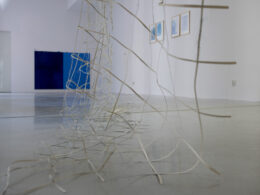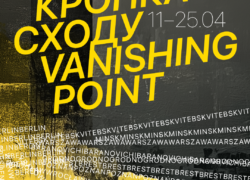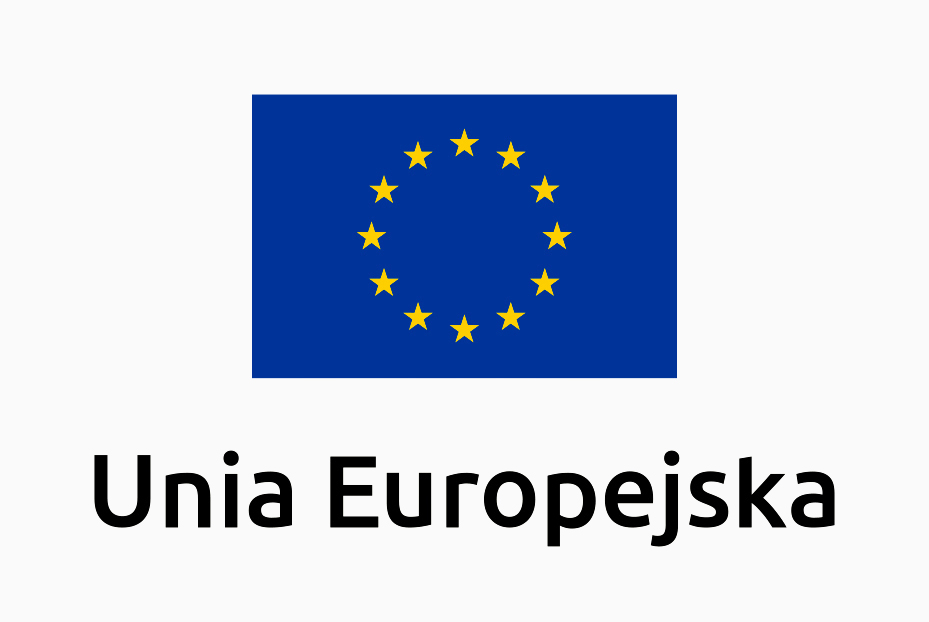We live in a world that subtly or otherwise imposes visibility or recognisability. Both of these akin, if not quite identical concepts are unique evidence of existence. Subliminally aware of this, the two artists and their curator would meet for several months, planning an exhibition about invisible islands… Dorota and Natalia are as fascinated by the ephemerality of the related phenomena as they are by the concrete, yet precise field of cartography. They love the free floating in memory, but also sailing on real seas. Both are sensitive to the hypnotic appeal of old atlases… The durability of paper maps can be illusory, because while they may last hundreds of years, their content loses relevance. History reshapes borders and nature is subject to both erosion and manmade destruction. Lands and seas are changing, escaping their centuries-old coordinates recorded by attentive cartographers….
The invisible is not there, and even when it is, it is easily forgotten. Invisibility comes close to absence, and as the saying goes, “the absent are always in the wrong”. Hence the need to remind ourselves about the past which loses its raison d’ être when it recedes from view. For Dorota Tarnowska-Urbanik, bringing out the past is especially important. It involves remembering people and things, cherishing memories, cultivating traditions, and maintaining continuity… Not only by respecting the past, but also by building and confirming the identity of what is clearly visible but needs roots, those elements that are usually hidden. Disagreement with the complete and traceless disappearance is “visible” in Dorota’s works. The artist feels an inner urge to verify her memories, to organize them and to attend to their shape and survival. Remembrance is also a kind of duty, while memories can be a form of longing. Thus the cultivation of memory prolongs the existence of what has vanished. This applies to whole countries, which can be erased…
Of great importance for Natalia Czarcińska are travelling and the attendant discoveries, as well as crossing borders, not only those between countries. Scattered across the seas, both imagined and real, the islands are a capacious metaphor and areas worth exploring and remembering. The artist wants to probe and observe them and to draw from them. She tries to find herself somewhere between these boundless waters that surround us all, treating her search as a kind of “navigation exercise”. Sailing, including metaphorical sailing, allows one to verify or organize imaginings. Thus it becomes an imperative. One would like to say after Pompey: “Navigare necesse est…“.
The eponymous islands, neither in Dorota’s nor in Natalia’s case, are to be understood as those from Gałczyński’s poem “Request for Happy Islands”. These islands do not offer an escape from reality or a wonderful, intimate shelter. Both artists’ journeys carry the potential for failure, involve hardship and can bring disappointment. Invisible islands are rarely happy places. Most often they have ceased to exist, their inhabitants have changed, or they have passed under a different government. Sometimes they return only in dreams and memories, or last against all odds, sending us back to the painful stories they witnessed. They often exist, though everything around them goes on as if they were not there. Invisible islands exist in everyday life, history, politics, art…
By standing up for the invisible, the artists do not seek a simple reconstruction or rebuilding of what has vanished. Rather, they want to construct a space in which the invisible continues to exist, even though it is still invisible. There appear signs, traces or tracks of memory. Both Dorota’s metaphorical cartographic grid, fragile as lace, and Natalia’s painterly compositions saturated with sea colours may prove helpful. The motif of a map returns in several works of both artists presented at the exhibition. Cartography seems to have the power, which might be illusory, to fight chaos, to order space and thus reality. Maps store the past, document it and explain it in their legends written in small print. Dorota and Natalia draw on topographical notions, and their starting point is an atlas and bodies of water. Still, the coordinates on these maps originate from literature rather than geography and are rooted in human stories rather than in cold cartography.
Bogna Błażewicz
